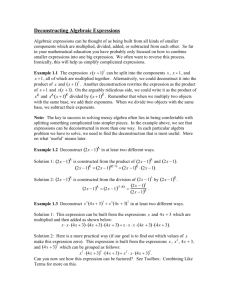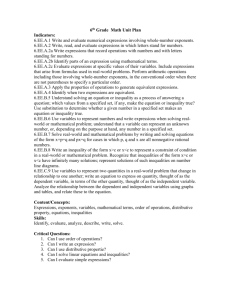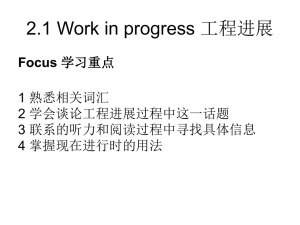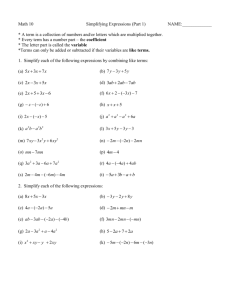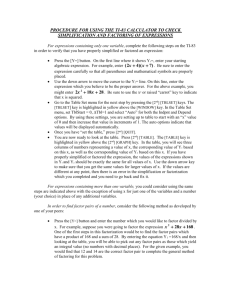6 - L-S-Analysis of Oral Comprehension
advertisement
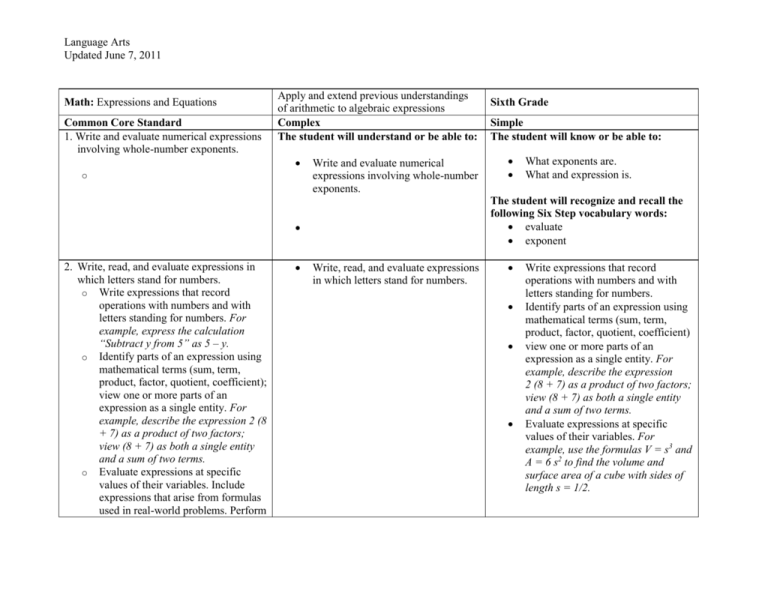
Language Arts Updated June 7, 2011 Math: Expressions and Equations Common Core Standard 1. Write and evaluate numerical expressions involving whole-number exponents. Apply and extend previous understandings of arithmetic to algebraic expressions Complex The student will understand or be able to: o Write and evaluate numerical expressions involving whole-number exponents. Simple The student will know or be able to: What exponents are. What and expression is. The student will recognize and recall the following Six Step vocabulary words: evaluate exponent 2. Write, read, and evaluate expressions in which letters stand for numbers. o Write expressions that record operations with numbers and with letters standing for numbers. For example, express the calculation “Subtract y from 5” as 5 – y. o Identify parts of an expression using mathematical terms (sum, term, product, factor, quotient, coefficient); view one or more parts of an expression as a single entity. For example, describe the expression 2 (8 + 7) as a product of two factors; view (8 + 7) as both a single entity and a sum of two terms. o Evaluate expressions at specific values of their variables. Include expressions that arise from formulas used in real-world problems. Perform Sixth Grade Write, read, and evaluate expressions in which letters stand for numbers. Write expressions that record operations with numbers and with letters standing for numbers. Identify parts of an expression using mathematical terms (sum, term, product, factor, quotient, coefficient) view one or more parts of an expression as a single entity. For example, describe the expression 2 (8 + 7) as a product of two factors; view (8 + 7) as both a single entity and a sum of two terms. Evaluate expressions at specific values of their variables. For example, use the formulas V = s3 and A = 6 s2 to find the volume and surface area of a cube with sides of length s = 1/2. Language Arts Updated June 7, 2011 arithmetic operations, including those involving whole-number exponents, in the conventional order when there are no parentheses to specify a particular order (Order of Operations). For example, use the formulas V = s3 and A = 6 s2 to find the volume and surface area of a cube with sides of length s = 1/2. 3. Apply the properties of operations to generate equivalent expressions. For example, apply the distributive property to the expression 3 (2 + x) to produce the equivalent expression 6 + 3x; apply the distributive property to the expression 24x + 18y to produce the equivalent expression 6 (4x + 3y); apply properties of operations to y + y + y to produce the equivalent expression 3y. The student will understand or be able to: Apply the properties of operations to generate equivalent expressions. The student will know or be able to: The distributive, associative, commutative, identity and zero property. The student will recognize and recall the following Six Step vocabulary words: Language Arts Updated June 7, 2011

